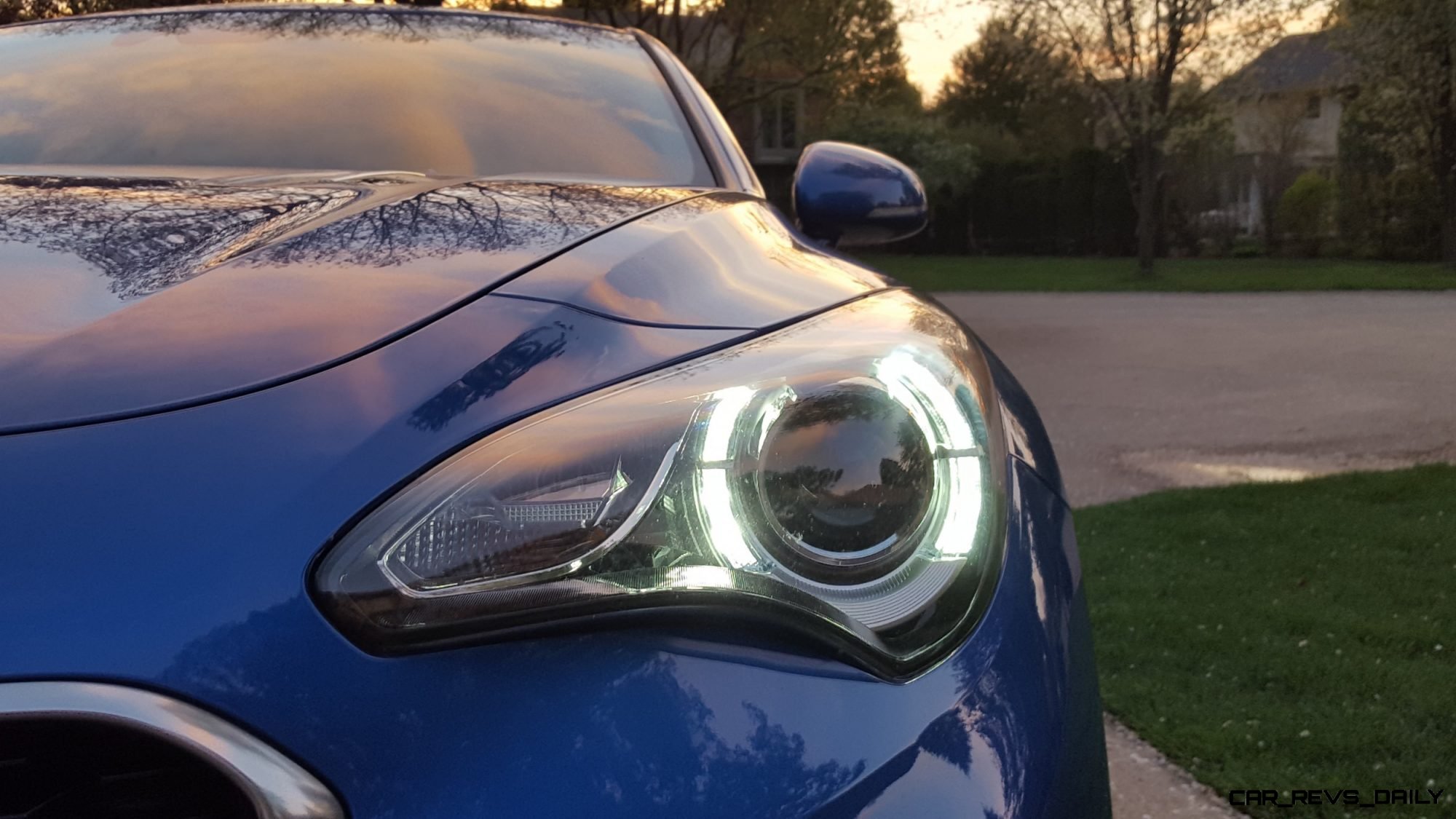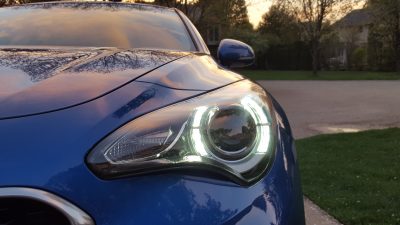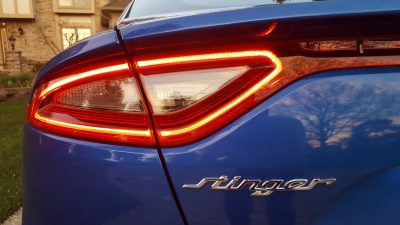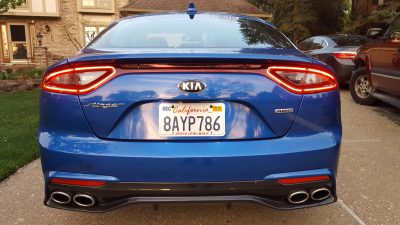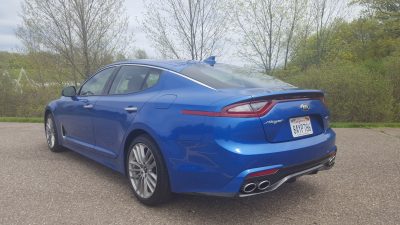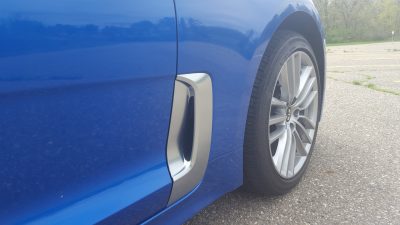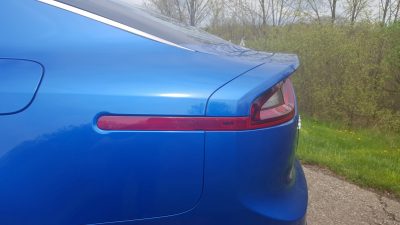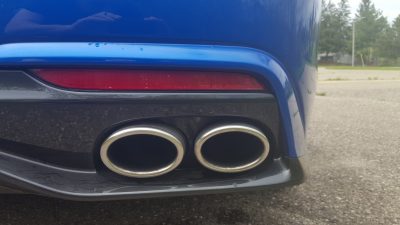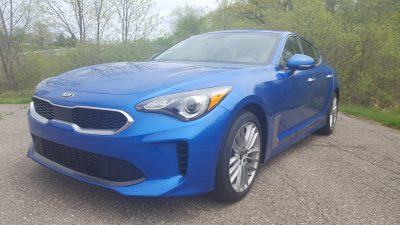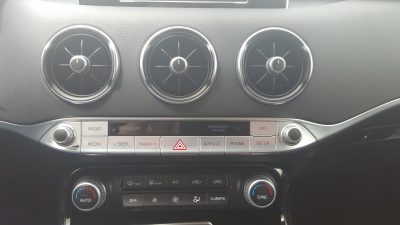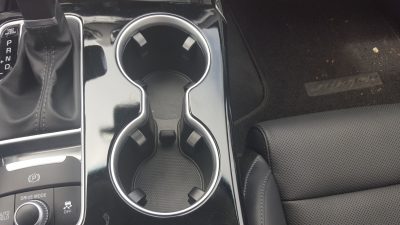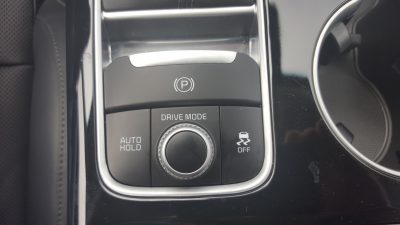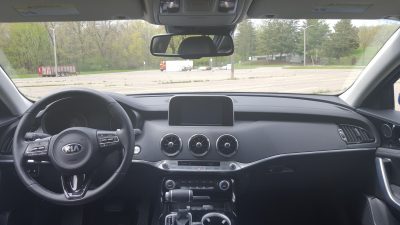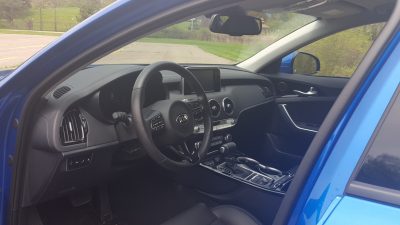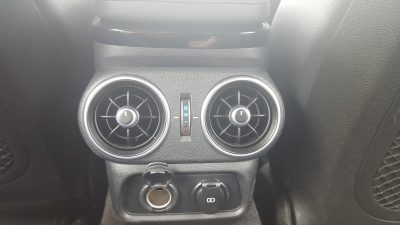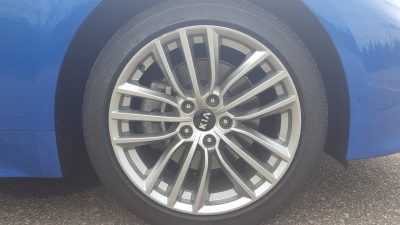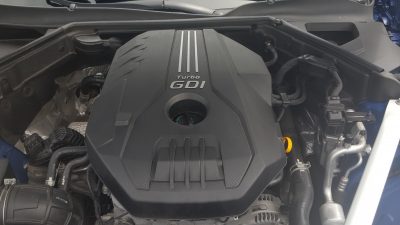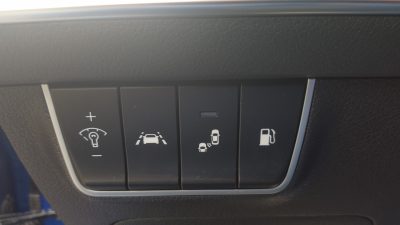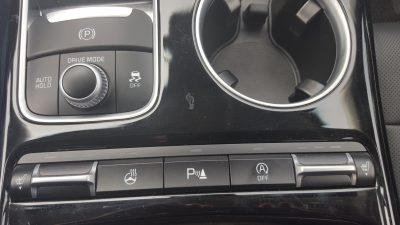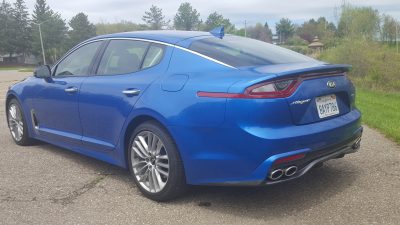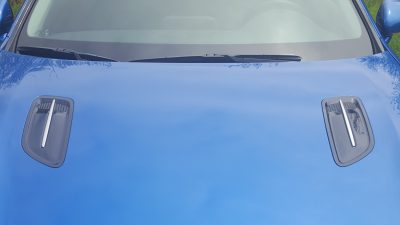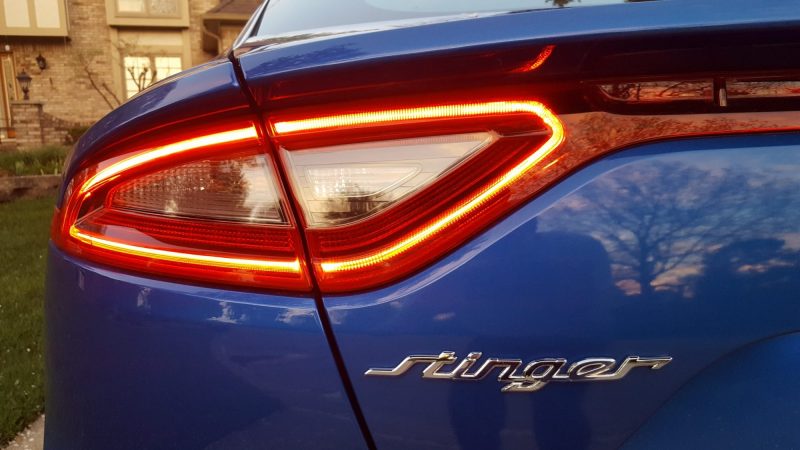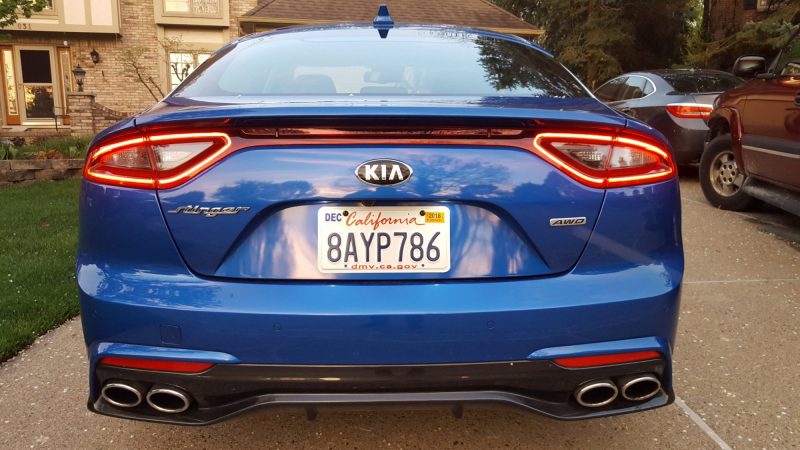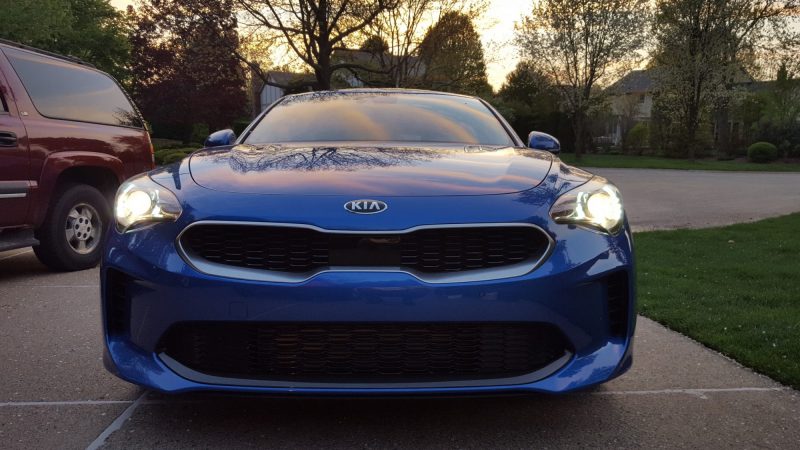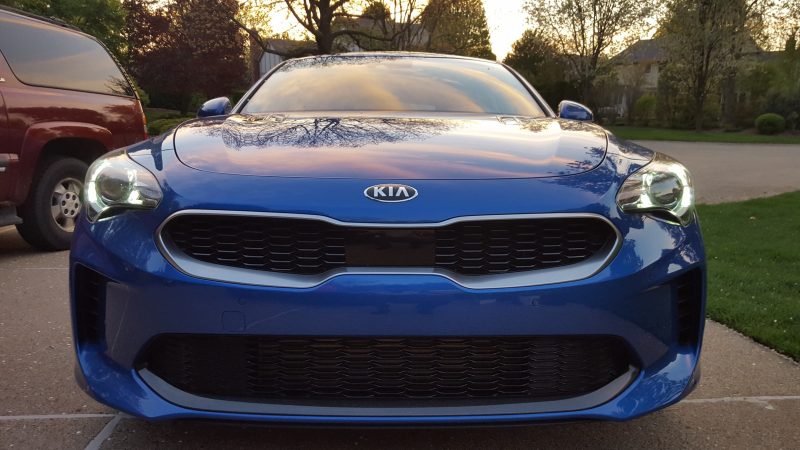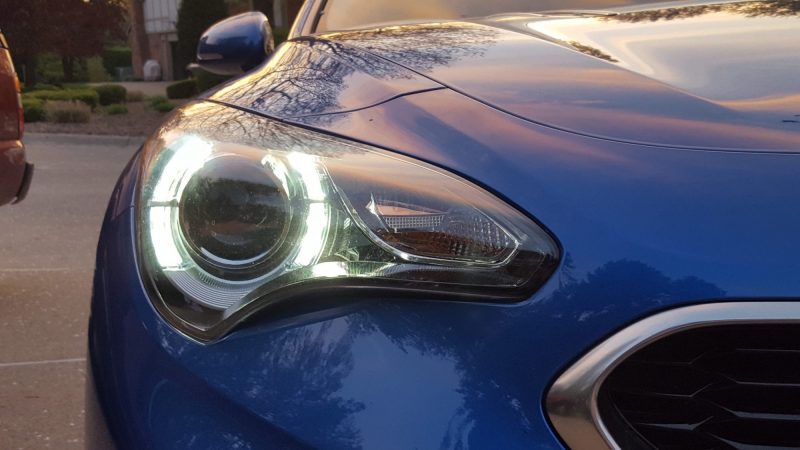It’s no secret that Kia has undergone a transformation the past few years. Once known for making products that were cheap and not much else, the Korean car brand has now embraced a fresh new wave of substance, thanks to models such as the Optima, and the flagship K900 sedans.
The newest member of the family is the 2018 Kia Stinger, which aims to compete with the best that Europe has to offer. But can the Stinger hold its own against benchmarks like the BMW 3-Series and the Mercedes C-Class? or does it lack the venom needed to make a statement in one of the few segments not affected by the rise in crossover demand?
At first glance, it appears that the Stinger has the aesthetic goods to backup its ambitious goals. This is a bold Kia, and while our four cylinder equipped tester is NOT a range topping GT model, it does not lose much of the swagger that is already baked into its basic formula. This includes a bold front fascia that features sharp headlights, a sculpted hood with faux vents, and a stylish lower airdam that further highlights its aggressive undertones.
A key trait is its fastback roofline which has been a recent trend in vehicle design, and in the case of the Stinger, helps unify its stylish suit of clothes into a bold piece of eye candy. This strong identity helped our Micro Blue hued tester become the center of attention during its stay at our Michigan office, with co workers and passersby asking plenty of questions and taking extended looks at its flanks. The front grille is somewhat similar to BMW’s double kidney layout, but it still fits the Stinger quite well, and looks sharp in its own right.
The hatchback-esque layout as well as its fastback roofline helps create a very large trunk opening. However, when the trunk lid is fully opened, the door can be hard to reach for some shorter drivers and passengers including our audiophile (and certified music expert) Emily. The Stinger is also noticeably longer than many of its rivals, with Kia claiming that it’s part of the “more” quotient that buyers get for their money. The extra length does dividends for the Stinger’s styling, but it does make parking into tight spaces a bit of a chore when compared to similar experiences in an Audi A4 we recently tested.
The interior of our tester also embodies the driver focused DNA that has become a German sport sedan staple. The seats for example offer a balanced blend of comfort and support, with the rear seat in particular offering good amounts of legroom and comfort. The fastback profile does require a price to be paid and it shows in cramped headroom for taller rear passengers, as well as equally restricted rear visibility.
The rest of the cabin is still very attractive and composed, but it’s not quite ready to go punch for punch with its German rivals just yet. Material quality is a step or two behind established luxury brands, with the bulk of the blame going towards its plastic heavy dashboard, as well as some chintzy switchgear. Kia’s UVO infotainment system is on board, but the screen is a tad smaller than others in the segment, and that might put off more discerning clientele.
Performance for the 2018 Kia Stinger comes from a duet of engines. A 3.3 liter turbocharged V6 is standard issue in higher grade models, but our tester arrived with the 2.0 liter turbocharged four cylinder, which is expected to be the volume offering. Power is on par with other 2.0 liter offerings, with the Stinger boasting 255 horsepower, which is slightly ahead of the four cylinder equipped A4, as well as other segment benchmarks.
Acceleration in our all-wheel drive equipped tester was spirited, but like other Kia/Hyundai turbocharged offerings, there is a noticeable amount of turbo lag before things fully spool up. Once they do, you are rewarded with a 6.1 second 0 to 60 time, as well as an enjoyable soundtrack. An eight speed automatic is the sole choice available, and it did an excellent job delivering smooth crisp shifts. Our tester also came equipped with steering wheel mounted paddle shifters, but slow downshift requests prompted us to let the computer handle shifting duties for the duration of its stay with us.
Handling was also composed, but the Stinger still has some fine tuning left to do before it can truly take the podium from established entries. When pushed to its limits, we did notice some light protest from the rear suspension, as well as fore and aft pitch when accelerating and braking. The Stinger is also a heavy offering, and you can feel alot of its near 4,000 lb curb weight when cornering, which does slightly take away from some of the fun being communicated through the steering wheel. While this ensures that the Stinger will not perfectly copy the sublime steering found in the BMW 3- Series, it should still be a thrilling alternative for enthusiasts looking for a true value experience.
Every Stinger comes equipped with five distinct driving modes (Comfort, Smart, Sport, Eco, and Custom) which alter the Stinger in various ways to suit a wide range for driver tastes. In our opinion, Comfort and Eco are not a good fit for this car, and we expect the bulk of Stinger drivers to leave it in either Smart or Sport modes, which do bring out the best that this spunky four door has to offer. Braking in our tester was stable despite not being equipped with the GT exclusive Brembo brake system.
While that latter system enhances track performance, we feel that the default system should be capable enough for many drivers, especially since it still helps cut down on excess nose dive.
PRICING
Pricing for the 2018 Kia Stinger starts at $31,900 for the base rear wheel drive model. Our all-wheel drive equipped tester had a base price of $34,100 with the all-wheel drive system adding $2200 to the MSRP. When equipped with its sole option (the $2,000 Advanced Driver System package) the final number rounded out to $37,000 which includes the $900 destination fee.
For this price, our tester’s eccentric suite of equipment proved to be a double edged sword. For instance, our tester featured heated seats and a heated steering wheel, but lacked a navigation system, power liftgate, and sunroof. While we’re at it, the 7.0 inch touchscreen is slightly smaller than rival units, and in an age where on board WiFi is becoming more prevalent, the Stinger remains distinctively analog.
At the end of the day, there is still plenty of value to be had in the 2018 Kia Stinger. Not only does it have more residual appeal than its German rivals, but the car also brings a true bonafide fun offering to Kia showrooms. There’s still plenty of time for Kia to iron out many of its shortcomings, but if the Stinger’s solid platform is any indicator of whats in store for the upcoming Genesis G70, BMW, Audi, and even Alfa Romeo will have something to worry about in due time.

Carl Malek has been an automotive journalist for over 10 years. First starting out as a freelance photographer before making the transition to writing during college, his work has appeared on numerous automotive forums as well as websites such as Autoshopper.com.
Carl is also a big fan of British vehicles with the bulk of his devotion going to the Morgan Motor Company as well as offerings from Lotus, MG, and Caterham. When he is not writing about automobiles, Carl enjoys spending time with his family and friends in the Metro Detroit area, as well as spending time with his adorable pets.

